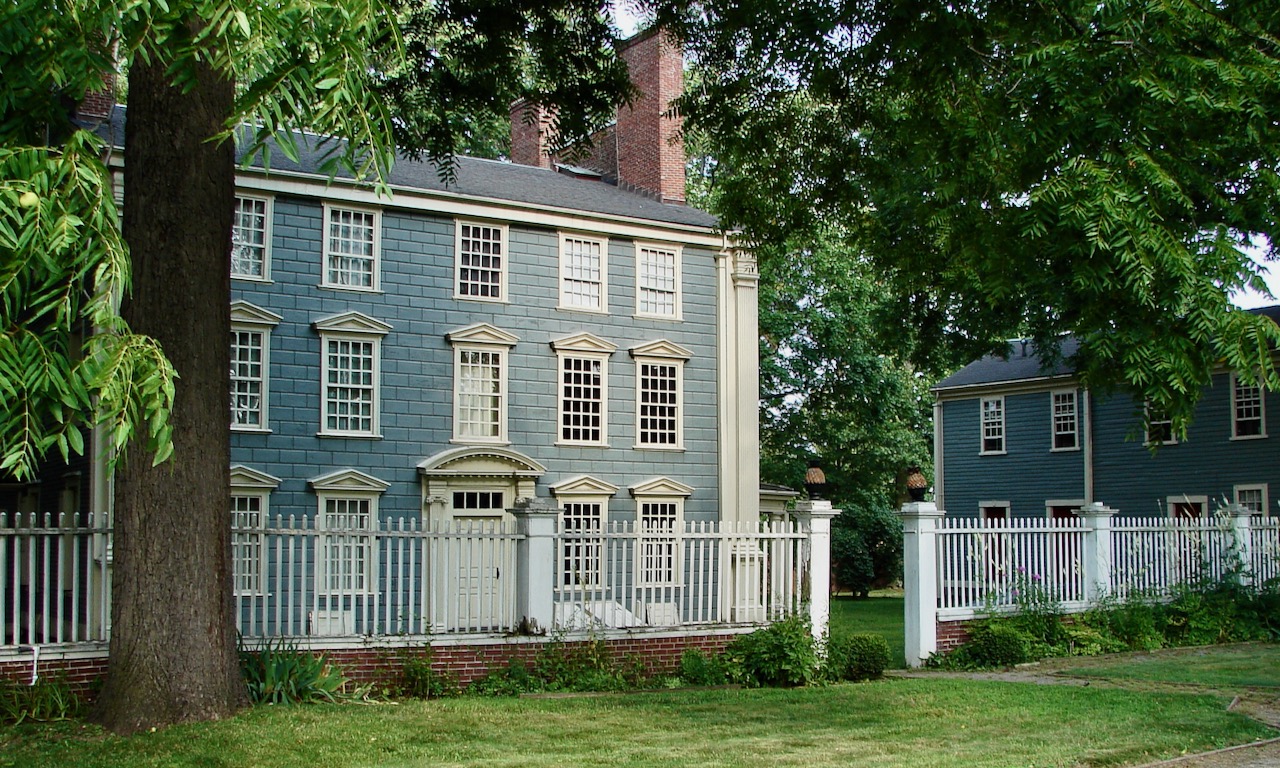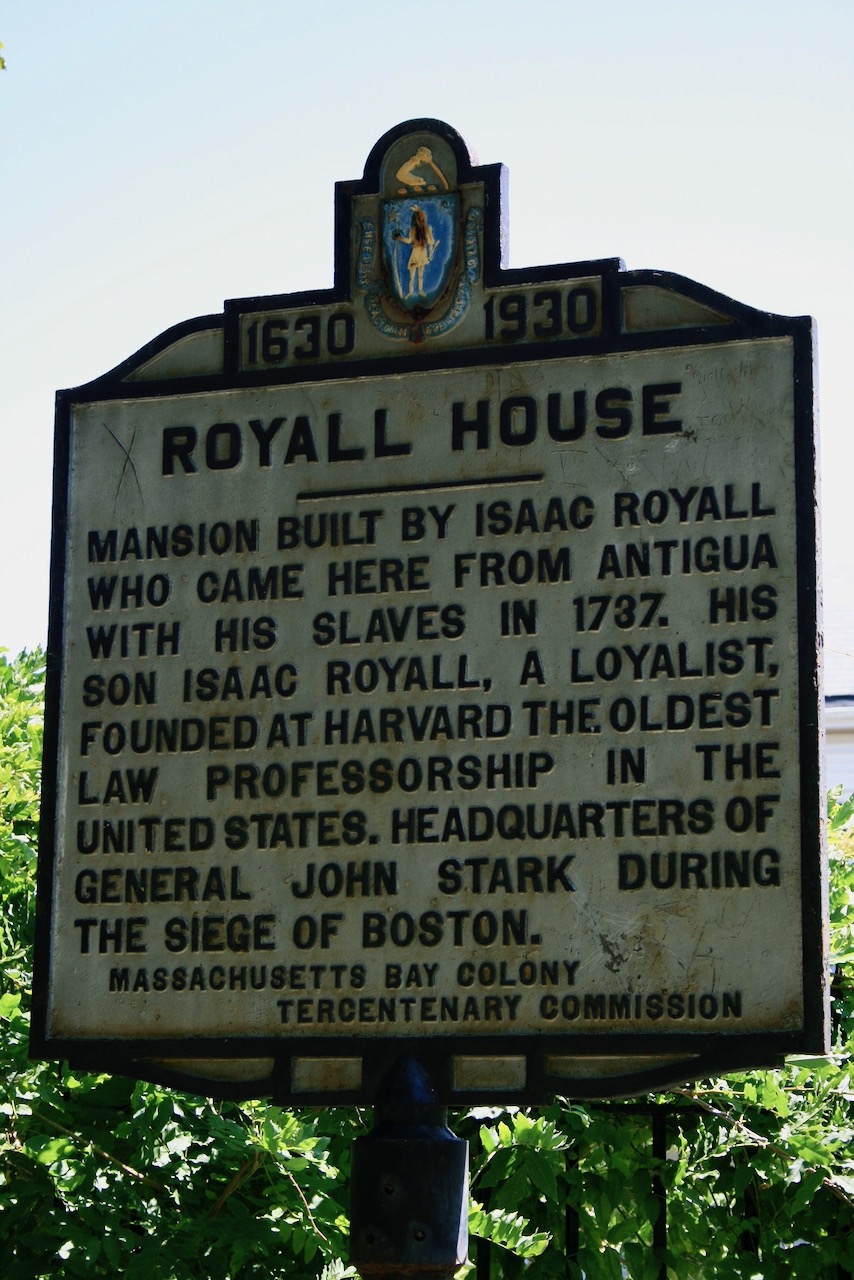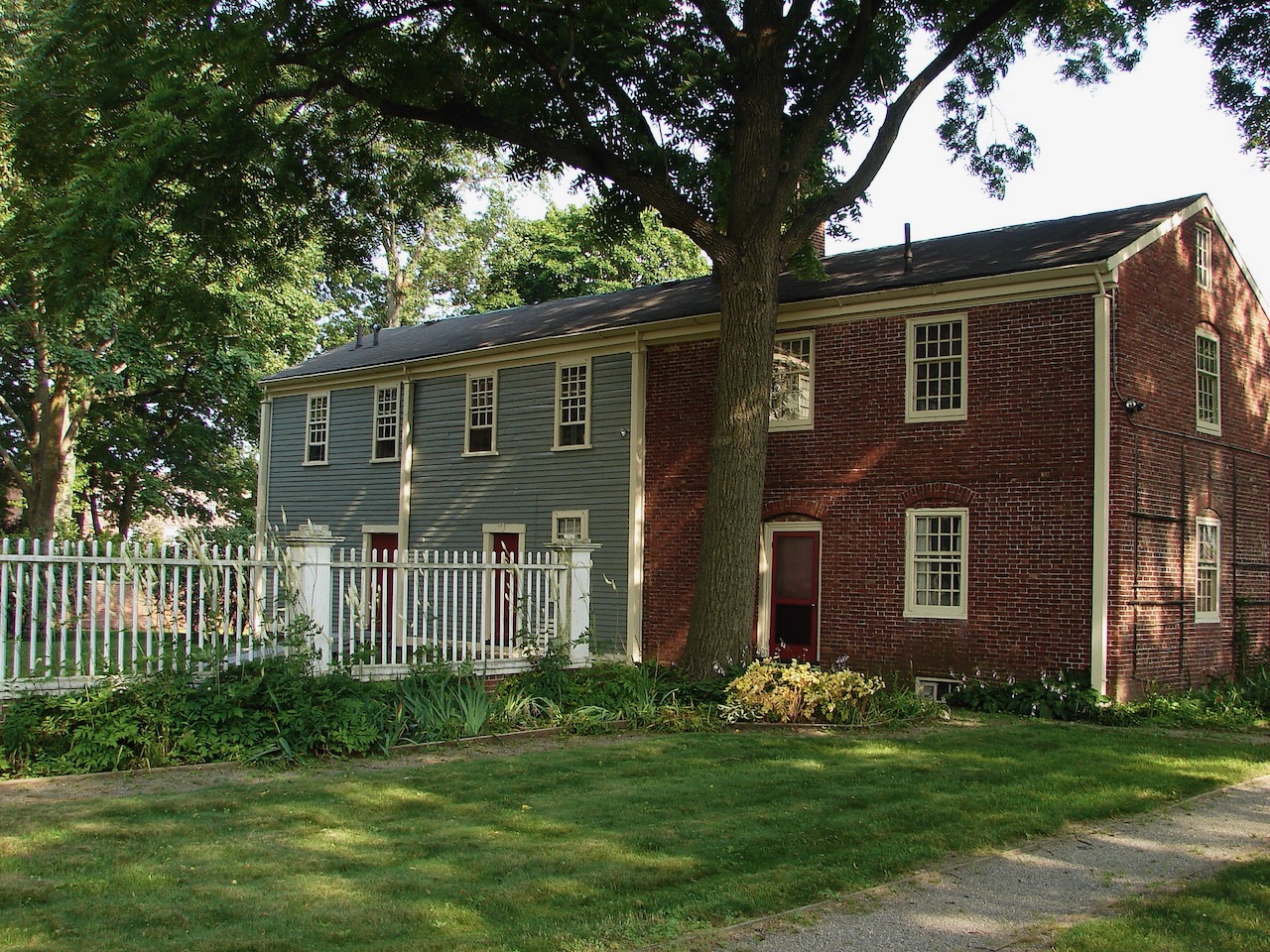

1630 — 1930
ROYALL HOUSE
MANSION BUILT BY ISAAC ROYALL
WHO CAME HERE FROM ANTIGUA
WITH HIS SLAVES IN 1737. HIS
SON ISAAC ROYALL, A LOYALIST,
FOUNDED AT HARVARD THE OLDEST
LAW PROFESSORSHIP IN THE
UNITED STATES. HEADQUARTERS OF
GENERAL JOHN STARK DURING
THE SIEGE OF BOSTON.
MASSACHUSETTS BAY COLONY
TERCENTENARY COMMISSION

In 1732, Isaac Royall, Sr. purchased 504 acres of land in Medford, Massachusetts. The site was highly visible from several points along the well-traveled Mystic River and straddled a major thoroughfare linking Boston with towns to the north. After five years of construction and landscaping, the Royall family moved to their new home from their sugar plantation in Antigua.
When Royall, Sr. expanded the original colonial farmhouse into a three-story Georgian mansion in the late 1730s, he also borrowed from practices common in the Caribbean and constructed a summer “out kitchen” to keep heat away from the house in warmer temperatures. Upon Royall, Sr.’s death in 1739, his son, Royall, Jr. inherited the immense estate at the age of 20. Around 1760, a simple clapboard addition more than doubled the size of this brick “out kitchen,” creating what is known today as the Slave Quarters. The first floor of the addition—located just thirty-five feet from the mansion—was originally divided into three narrow rooms, each with a door opening onto a cobblestone courtyard. This structure is the only known extant separate slave quarters in the northern United States.
The Royalls enslaved twenty-seven Africans, including Belinda Sutton, at the estate. Their labor was essential to its operation and maintenance. The grounds featured ornamental plantings and well-tended lawns, in addition to orchards and pastures for sheep and cattle. Within a walled garden, an octagonal summerhouse stood some twenty-five feet high on a double-terraced mound, aligned on an axis with the main doors of the mansion. A carved wooden statue of winged Mercury, the Roman god of commerce, topped its bell-shaped cupola.
The Royall family’s wealth was based on their strong ties to powerful loyalist families and the English crown. Thus, despite his apparent sympathies to the Patriot cause, Royall, Jr. fled to England at the outbreak of the Revolutionary War and the General Court confiscated the estate in his absence. The mansion was used during the early months of the Revolution by Generals Lee, Stark, and Sullivan, and was visited by George Washington. Following the Revolution, Washington’s secretary, Colonel Cary, lived in the house for two years, as well as in 1790. In 1804, the estate was returned to Royall, Jr.’s heir, his granddaughter Elizabeth (Royall) Hutton, who sold the estate to Robert Fletcher for £16,000.00 in 1806.
By the end of the 19th century, the property had passed through multiple owners and had fallen into disrepair. In 1898, the Sarah Bradlee Fulton Chapter of the Daughters of the American Revolution conceived the idea to preserve the Royall House, “for the sake of its history and aesthetic value.” On Patriots’ Day 1898, they opened the house to the public for the first time. The formation of the Royall House Association followed with a mission to raise the necessary funds ($10,000) to purchase the house, slave quarters, and three-quarters of an acre of surrounding land to be maintained as a museum.
In 1930, the Massachusetts Bay Colony Tercentenary Commission erected an historical marker near the Main Street entrance to the property. Its inscription reads:
1630 — 1930
ROYALL HOUSE
MANSION BUILT BY ISAAC ROYALL
WHO CAME HERE FROM ANTIGUA
WITH HIS SLAVES IN 1737. HIS
SON ISAAC ROYALL, A LOYALIST,
FOUNDED AT HARVARD THE OLDEST
LAW PROFESSORSHIP IN THE
UNITED STATES. HEADQUARTERS OF
GENERAL JOHN STARK DURING
THE SIEGE OF BOSTON.
MASSACHUSETTS BAY COLONY
TERCENTENARY COMMISSION
Today the Royall House Association owns and operates the Royall House and Slave Quarters as a museum and educational resource. The property was designated a National Historic Landmark in 1962.

